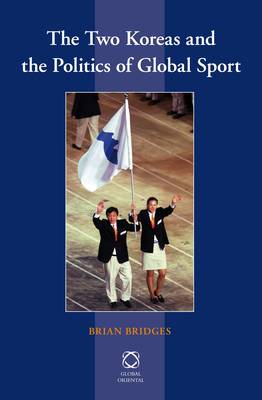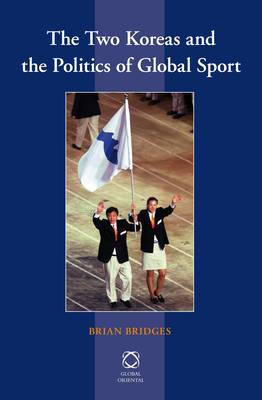
- Afhalen na 1 uur in een winkel met voorraad
- Gratis thuislevering in België vanaf € 30
- Ruim aanbod met 7 miljoen producten
- Afhalen na 1 uur in een winkel met voorraad
- Gratis thuislevering in België vanaf € 30
- Ruim aanbod met 7 miljoen producten
Zoeken
€ 192,45
+ 384 punten
Omschrijving
In ordinary circumstances, one could be forgiven for assuming that sport unites rather than divides people. But, as this first in-depth study of inter-Korean sporting life and competition over more than six decades clearly demonstrates, sport has in fact been held hostage to the ups and downs of inter-Korean political relations.
The two Koreas have devoted considerable resources to developing sporting systems and securing sporting achievement globally, with important ramifications for both national pride and inter-Korean rivalry. And while the author accepts that sport and politics are close allies wherever one travels in the world, it remains the case that for the two Koreas sport plays a more significant central role in the context of the vicissitudes of the relationship across the 38th parallel and has considerable repercussions on sporting ambitions and development for both countries.
This book has wide inter-disciplinary relevance in the context of Korean studies in particular and East Asian politics and international relations in general - with special reference to the phenomenon of 'two-state rivalry' as was or still is the case for Germany, Yemen, Vietnam and China/Taiwan. Those pursuing sports studies in an international context will also find this volume invaluable.
The two Koreas have devoted considerable resources to developing sporting systems and securing sporting achievement globally, with important ramifications for both national pride and inter-Korean rivalry. And while the author accepts that sport and politics are close allies wherever one travels in the world, it remains the case that for the two Koreas sport plays a more significant central role in the context of the vicissitudes of the relationship across the 38th parallel and has considerable repercussions on sporting ambitions and development for both countries.
This book has wide inter-disciplinary relevance in the context of Korean studies in particular and East Asian politics and international relations in general - with special reference to the phenomenon of 'two-state rivalry' as was or still is the case for Germany, Yemen, Vietnam and China/Taiwan. Those pursuing sports studies in an international context will also find this volume invaluable.
Specificaties
Betrokkenen
- Auteur(s):
- Uitgeverij:
Inhoud
- Aantal bladzijden:
- 198
- Taal:
- Engels
Eigenschappen
- Productcode (EAN):
- 9789004233393
- Verschijningsdatum:
- 22/08/2012
- Uitvoering:
- Hardcover
- Formaat:
- Genaaid
- Afmetingen:
- 157 mm x 239 mm
- Gewicht:
- 430 g

Alleen bij Standaard Boekhandel
+ 384 punten op je klantenkaart van Standaard Boekhandel
Beoordelingen
We publiceren alleen reviews die voldoen aan de voorwaarden voor reviews. Bekijk onze voorwaarden voor reviews.











